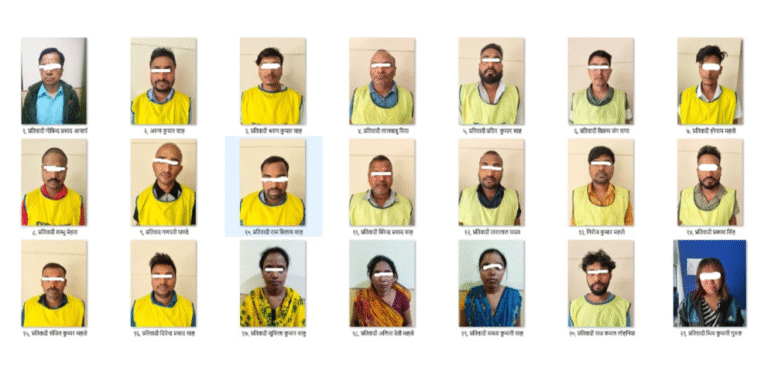Kathmandu Vehicle Emission Tests Expose Green Sticker Failures and Worsening Air Quality
Spot checks across Kathmandu uncover alarming vehicle emissions and expose weaknesses in the Green Sticker compliance system.

Current Air Quality of Kathmandu from IQ AIR (Source: https://www.iqair.com/)
Kathmandu: A recent on-the-spot vehicle emission testing campaign in Kathmandu reveals serious concerns about the city’s pollution levels and the effectiveness of the existing Green Sticker certification system. The tests, conducted by the Kathmandu Metropolitan City (KMC) in collaboration with various governmental bodies, uncovered alarming data about non-compliance among vehicles. The findings stress the need for stronger enforcement of emission regulations.
“Kathmandu’s air quality crisis is not just an environmental issue; it’s a public health emergency. Our testing program reveals just how far we are from meeting international standards,” says Surendra Bajgain, Media Facilitator for Kathmandu Metropolitan City. “It is imperative that we take immediate action to ensure the health of our residents.”
Kathmandu’s Growing Air Pollution Crisis
Kathmandu, located in a valley, faces severe air quality issues. Limited airflow and a growing number of vehicles are major factors contributing to the city’s pollution. According to reports, Kathmandu’s PM2.5 levels have reached dangerous concentrations. These tiny particles, which penetrate the lungs, have placed the city’s air quality in the “unhealthy” category. Vehicle emissions are a significant contributor, especially from older, diesel-powered vehicles that emit particulate matter (PM) and nitrogen oxides (NOx), which add to the smog.
“The increasing number of vehicles, combined with limited airflow in the valley, creates the perfect storm for air pollution. Without significant intervention, the situation will only worsen,” adds Bajgain.
Details of the Emission Testing Campaign
The emission tests were carried out in 24 locations across Kathmandu. In total, 1,265 vehicles were tested: 1,016 diesel vehicles and 249 petrol vehicles. The testing included two key methods:
-
Opacity Testing for Diesel Vehicles: Opacity measures the amount of smoke emitted by diesel engines. High opacity indicates more pollution from particulate matter (PM).
-
CO and HC Testing for Petrol Vehicles: For petrol vehicles, Carbon Monoxide (CO) and Hydrocarbons (HC) concentrations were measured. Elevated levels of CO and HC suggest incomplete fuel combustion, contributing to air pollution.
“The success of this program relies on transparency. We chose high-traffic locations deliberately so that the testing could be seen and felt by everyone,” explains Bajgain. “It’s about making this issue visible and holding everyone accountable.”
Key Findings: Diesel Vehicles Fail Emission Standards
Diesel vehicles were found to exceed emission limits more frequently than petrol vehicles. These vehicles, particularly those used for public transport and freight, often showed poor engine performance and high particulate emissions. The result is a significant contribution to the city’s air pollution.
Petrol Vehicles Perform Better
Petrol vehicles showed much higher pass rates, with lower emissions of CO and HC. This suggests that petrol engines, when well-maintained, produce fewer harmful pollutants compared to diesel engines. However, maintaining efficient combustion in all vehicle types remains crucial for improving air quality in Kathmandu.
Concerns Over the Green Sticker System
One of the most concerning findings was related to the Green Sticker system, which certifies vehicles as meeting emission standards. Among the 230 vehicles that had received Green Stickers, 71% failed the emission test within the sticker’s validity period.
Failure Rates by Sticker Type:
-
Private Vehicles:
-
9% of vehicles failed within 15 days of receiving their Green Sticker.
-
31% failed after 3 to 9 months.
-
16% failed after one year.
-
-
Public Vehicles:
-
42% of public vehicles failed within 6 months, the maximum validity period for these vehicles.
-
“The Green Sticker was designed as a certification of compliance. Unfortunately, the reality is that many vehicles are still polluting despite having this certification,” states Bajgain. “This shows a clear need to overhaul the Green Sticker system to make it more reliable and enforceable.”
Impact of Pollution on Kathmandu’s Health and Environment
Kathmandu’s air quality has deteriorated over time due to a combination of vehicle emissions, construction activities, and industrial pollution. In 2019, IQAir reported an average PM2.5 concentration of 48 μg/m³, which is considered unhealthy for sensitive groups. On some days, the levels reached even higher, affecting the general population’s health. This pollution contributes to respiratory diseases, heart problems, and long-term health issues for residents.
“This isn’t just about numbers; it’s about people’s lives. Every day we ignore the issue, more people are at risk of serious health complications,” warns Bajgain.
Steps Toward Cleaner Air in Kathmandu
The results from the emission tests are a wake-up call for Kathmandu. Immediate action is required to improve air quality. Here are a few key recommendations:
-
Overhaul the Green Sticker System:
-
Introduce random retesting.
-
Digitalize records to prevent forgery.
-
-
Enforce Regular Maintenance:
-
Require biannual emission inspections for all diesel vehicles.
-
Subsidize engine tune-ups for public and school fleets.
-
-
Stronger Penalties for Polluting Vehicles:
-
Impose higher fines for repeat offenders.
-
Suspend vehicle permits for extreme violators.
-
-
Public Education Campaigns:
-
Launch city-wide drives on vehicle care and pollution impact.
-
Partner with schools to engage youth in air-quality advocacy.
-
-
Incentives for Eco-Friendly Vehicles:
-
Government incentives for vehicles that meet stricter emission standards could help reduce pollution. This would encourage a shift toward cleaner, more efficient vehicles.
-
“This is not just a technical issue; it’s a societal issue,” Bajgain concludes. “Only by working together can we ensure Kathmandu breathes easier in the future.”
Conclusion: A Path to Cleaner Air
Kathmandu’s vehicle emission testing campaign reveals alarming levels of pollution and significant flaws in the Green Sticker system. Diesel vehicles, especially those used for public and freight transport, are major contributors to the city’s pollution. The findings highlight the need for stronger monitoring and enforcement of emission standards, as well as a comprehensive approach to reducing vehicle emissions across the city.
To improve air quality, Kathmandu must take action by reforming the Green Sticker system, promoting regular vehicle maintenance, and implementing stricter penalties for violators. Only through a collective effort can the city combat its pollution crisis and safeguard the health of its residents.



Please login to leave a comment.
Login to Comment